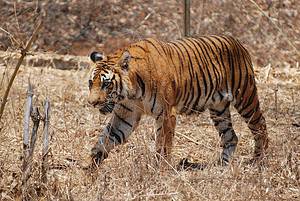Continue reading for our analysis...
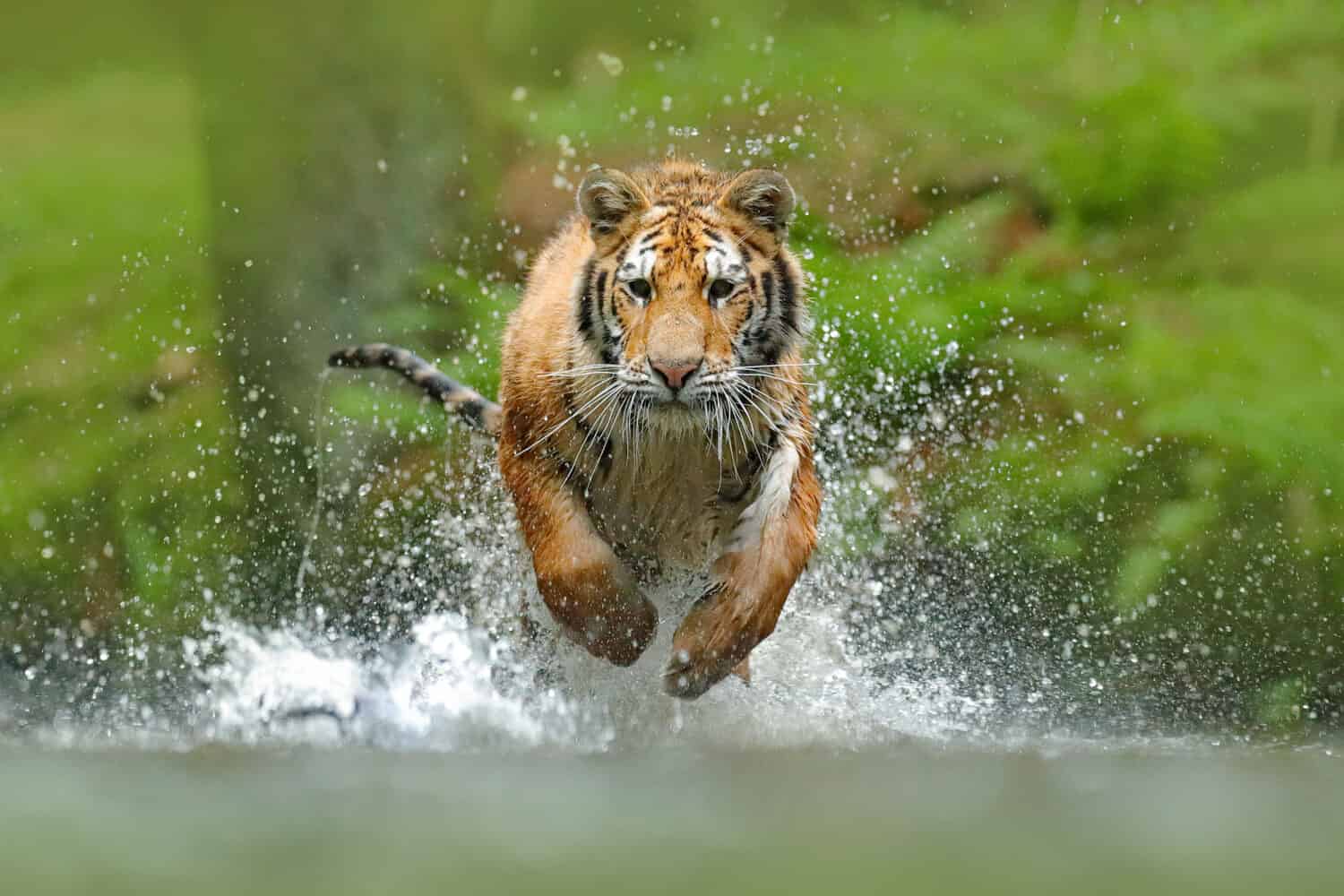
Unseen Hunter, Daring Escape: Deer Dashes From Tiger in a Riveting Chase
Prepare to be captivated by the adrenaline-fueled video below; a thrilling encounter between a masterful predator and a quick-witted prey. The scene opens with a tiger cunningly concealed within its hidden ambush position, unseen to viewer and prey alike until the decisive moment arrives. In a sudden burst of action, the feline lunges toward an unsuspecting deer, aiming to secure a well-deserved meal.
Yet, the deer’s sharp instincts serve as its salvation. Just moments before the tiger’s lethal pounce, the deer’s senses flare up, sensing imminent danger. Reacting with a lightning-quick response, the deer turns on a dime and runs. Then the deer takes a daring leap off a formidable 10-foot ledge to evade the big cat’s clutches by the narrowest of margins. Undeterred, the relentless chase ensues as the deer darts across the rocky bank of a shallow river. Now the tiger, driven by primal hunger, pursues with a deep intensity, each stride reflecting its survival-tied determination.
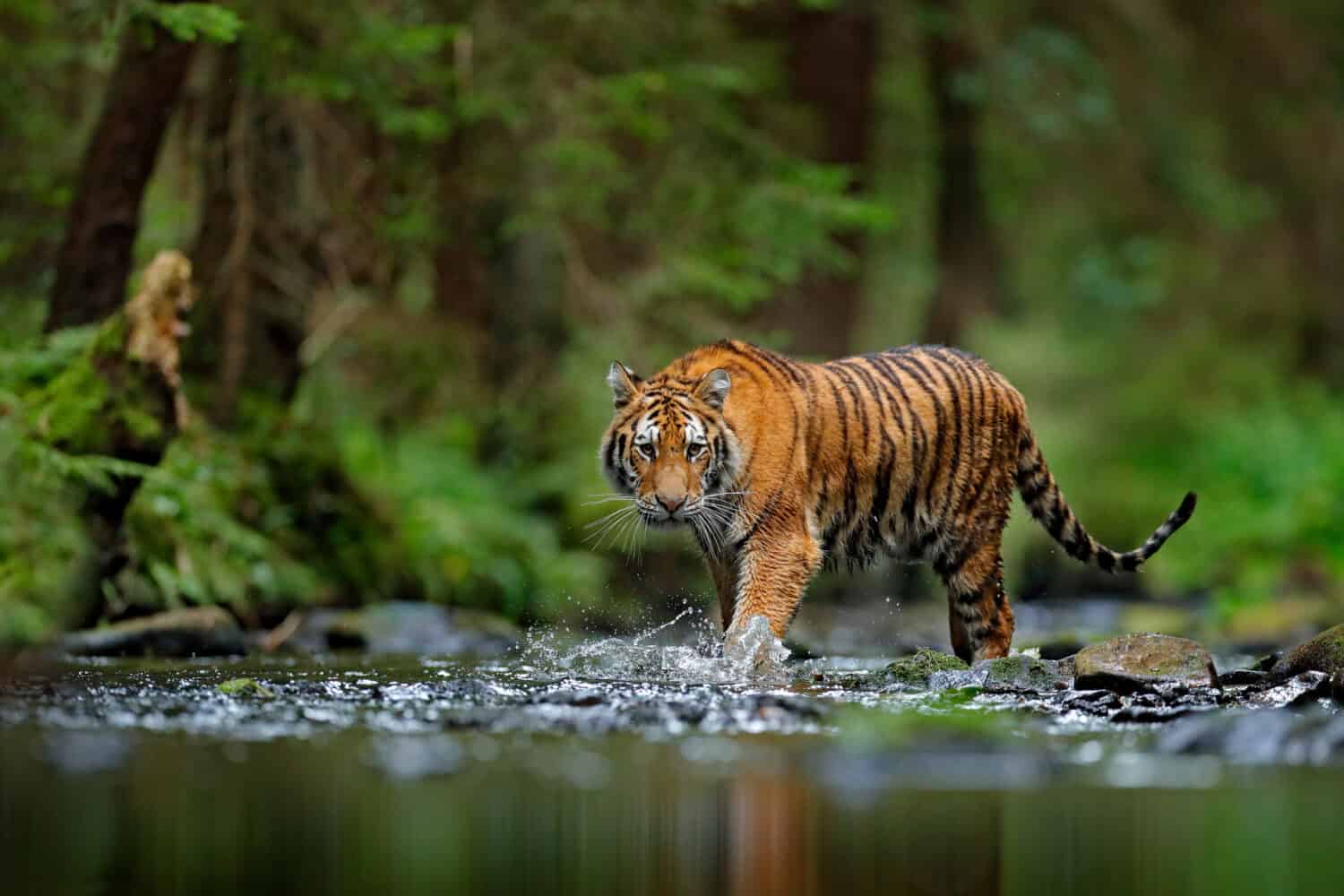
Tigers are ambush hunters, meaning they prefer slowly sneaking within short range of their prey before striking in surprise!
©Ondrej Prosicky/Shutterstock.com
Ultimately, the tiger comes to a disheartening realization—the deer has outmaneuvered and outrun it; the chase is futile. With a mix of resignation and longing, the tiger halts its pursuit, fixated on the fleeting figure of the triumphant deer, now beyond its reach.
The life-or-death scene below serves as a testament to the raw power and instinctual intelligence exhibited by both predator and prey in the natural world. It unveils the fine line between survival and succumbing to the wild forces at play, leaving viewers in awe of the extraordinary dynamics that unfold in the animal kingdom’s eternal struggle for life’s necessities.
The Incredible Science Behind Tiger’s Stripes!
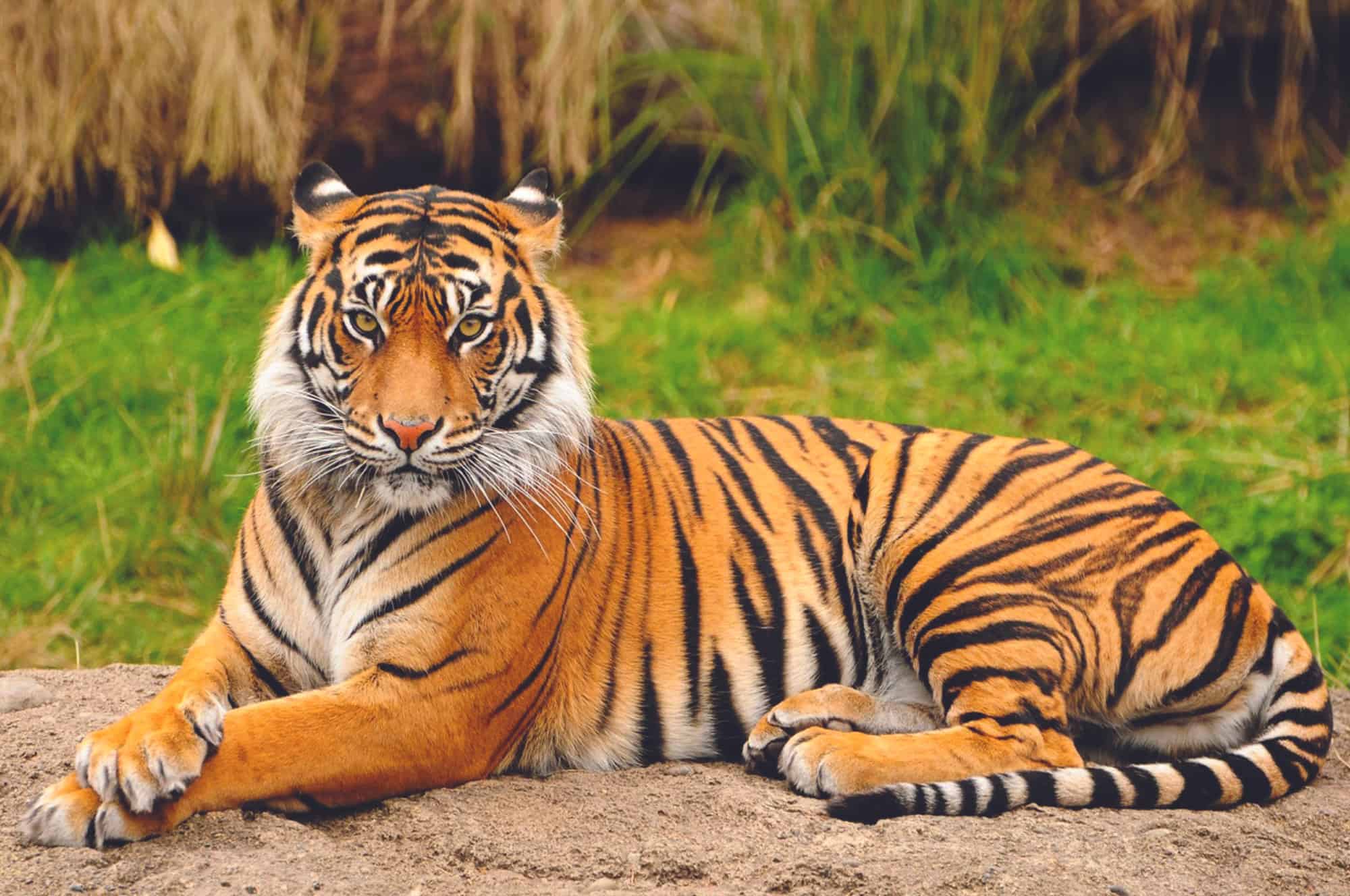
A tiger’s dark stripes break up its silhouette, causing it to blend into its environment.
©iStock.com/Thinker360
Tigers are skilled ambush hunters, utilizing their striking striped coats for camouflage. The science behind their distinctive markings lies in disruptive coloration. The dark stripes break their silhouette, blending them into their environment. This visual deception confuses prey and enhances their stealthy approach, allowing tigers to come within mere meters of their prey without detection, as shown in the video below! Additionally, the background colors of a tiger’s coat adapt to different habitats and vegetation, ensuring effective concealment. Through millions of years of evolution, tigers have developed this remarkable adaptation, allowing them to become expert stalkers, disappearing into the shadows of their surroundings, and striking their prey with precision and efficiency. Their captivating coat serves as both a symbol of their majestic beauty and a practical tool for survival in the wild.
How Often Do Tigers Hit Their Target?
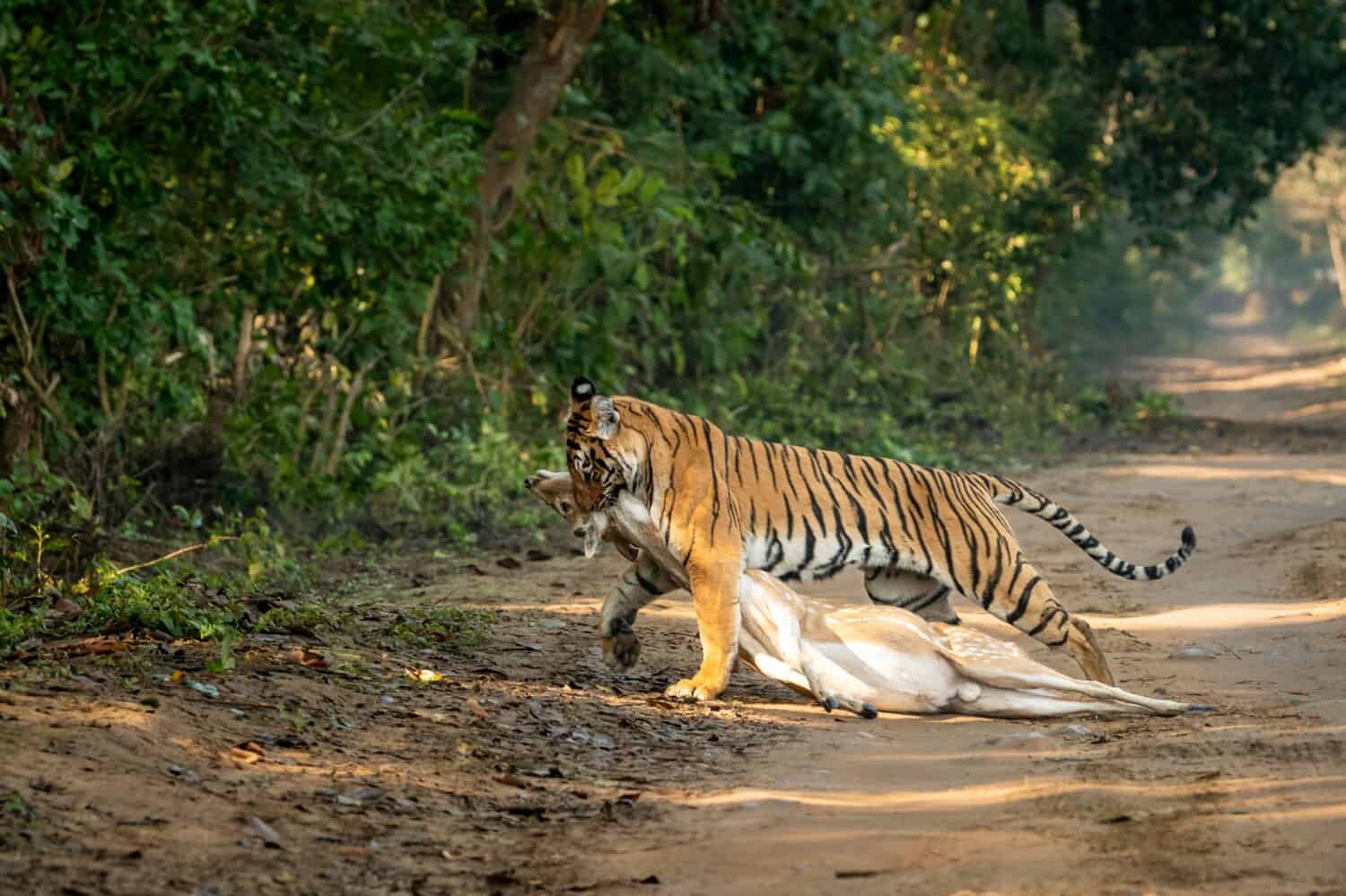
Tigers are incredibly strong and surprisingly agile for their size, making them lethal predators against their prey who have fine-tuned instincts of their own!
©Sourabh Bharti/Shutterstock.com
Tigers are formidable predators, but their success rate in hunts can vary depending on several factors. On average, tigers have a success rate of around 10 to 20 percent. Factors such as the availability of prey, terrain, and the tiger’s individual hunting skills play a significant role. Tigers are adept at utilizing their stealth, strength, and speed to their advantage. And they often rely on surprise attacks to secure a kill. Yet as we see in the video below, not every hunt results in success. Their prey can be agile, elusive, or even capable of fighting back. Despite these challenges, tigers’ hunting prowess and adaptability make them highly efficient predators in their respective habitats and not a foe any prey animal wants to come across.
Is it Normal for a Deer to Outrun a Tiger?
Tigers are capable of running at incredibly fast speeds. They can reach from 35-40 mph in short bursts when in pursuit. However, deer are quick and agile creatures, and if running for their lives, can also reach speeds of 35-40 mph.
With the scenario in the video, these animals seem equally matched. At first, it appears the tiger is gaining on the deer and will take it down. But the deer seems to have the edge on endurance. After the leap over the cliff face, the tiger appears to tire and eventually gives up the chase. If the tiger had waited in hiding a bit longer for the deer to get closer, this chase may have turned out differently.
Thank you for reading! Have some feedback for us? Contact the AZ Animals editorial team.






